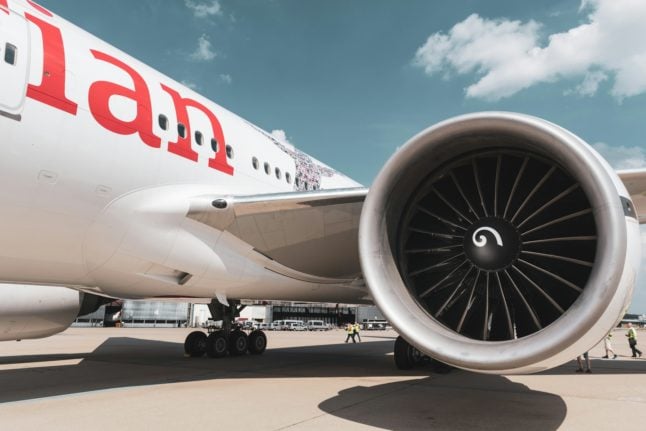Austrian Airlines (AUA) announced on Tuesday that it has had to cancel around 400 flights after cabin crew confirmed a strike action during Easter week, as The Local reported. According to the company, around 40,000 passengers affected have already been informed and offered options to cancel their flights or reschedule.
The strike should last 36 hours, from midnight on Wednesday night until midday on Friday. Yet, while some worker’s representatives say they’d be willing to cancel the strike (though the flights would remain cancelled if that happened) if they came to an agreement with the company, statements by both sides seem to show that they couldn’t be farther from a deal.
And that means more strikes could follow.
READ ALSO: What do Austrians eat during Easter celebrations?
Large salary difference to Lufthansa
One of the issues recently brought up by the trade union, which has demanded salary increases of up to almost 50 percent, is the significant salary gap between workers of Austrian Airlines and those who work for parent company Lufthansa.
Unions claim salaries at Austrian Aitrnes are around 40 percent lower.
“The fact is: from an Austrian perspective, we are in a situation where there are glaring inequalities compared to the Lufthansa Group,” union leader Roman Hebenstreit told Ö1-Morgenjournal on Wednesday.
“From the point of view of the Austrian workforce, we need to be compensated for this,” he added.
But Austrian Airlines CEO Annette Mann went on ORF’s ZIB2 programme on Tuesday evening and said that the comparison within the Lufthansa group is like comparing “apples with pears”.
She stated that AUA had a profit margin of just over five percent last year, which “had not been high enough”. Additionally, the company has to cover the cost of high investment in its fleet of planes, she said.
Mann criticised the union’s demands, saying that “the higher the pay deal, the more unprofitable the routes become”, which could not happen in the company’s current state.
Discrepancy of offers
“After a total of 17 rounds of negotiations, the Vida union and the works council still do not want to discuss our offer of an increase in pay of up to 18 percent for flight attendants and pilots, and even up to 28 percent for co-pilots”, said AUA in a statement on its website.
“With this offer, the company has already moved beyond the economically feasible pain threshold,” the statement reads. “We hope the union and the works council will come to their senses after the strike and reserve the right to revise our offer until then.”
READ ALSO: Everything that changes in Austria in April 2024
Austrian media has reported that the Vida union demands a pay rise starting at 16.94 percent for certain employees (such as senior flight attendants) and up to 49.48 percent for co-pilots. An industry expert consulted by the newspaper said that the average salary increase for foreign airlines was 9.52 percent.
Other demands by union members include more paid leave (42 calendar days from the sixth year of employment) and specifics regarding the hotels the crew stays, such as a requirement that they have a pool and fitness area and be located near the airport for waiting times of up to 12 hours otherwise in the city centre.
Strikes have been averted before
Meanwhile, from the union’s point of view, a collective agreement is still possible by Wednesday shortly before midnight to avert a strike for Maundy Thursday and Good Friday.
According to Hebenstreit, the union is willing to negotiate “right up to the last minute”. The fact that hundreds of flights will still be cancelled even if the strike is averted is “regrettable”, he said.
This is not the first time company and workers have clashed, with strikes looming over the negotiating table. Just last year, also ahead of Easter week, Austrian Airlines workers and company reached an agreement for flight staff that averted a strike, as The Local reported at the time.
Both parties struck a deal on April 3rd, the Monday of Easter week, as reported.
We’re (much) closer to the promised strike day, but the cancellation of hundreds of flights over the high season and ahead of spring and summer certainly puts more pressure on the company.



 Please whitelist us to continue reading.
Please whitelist us to continue reading.
Member comments